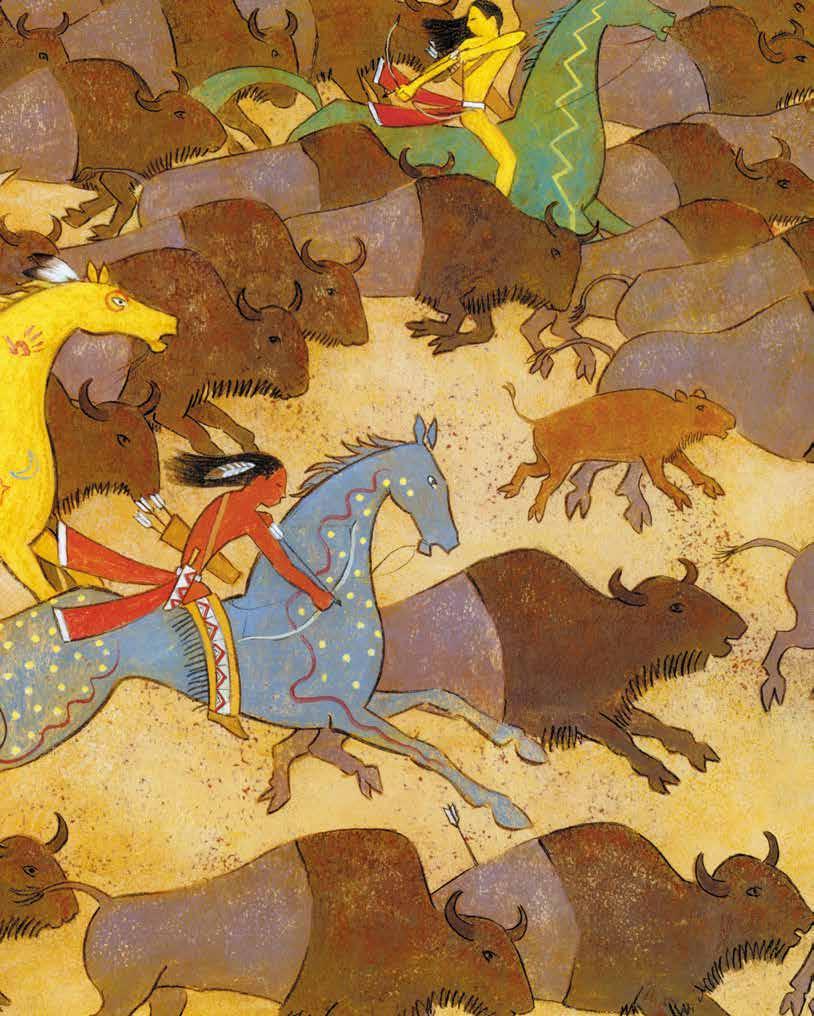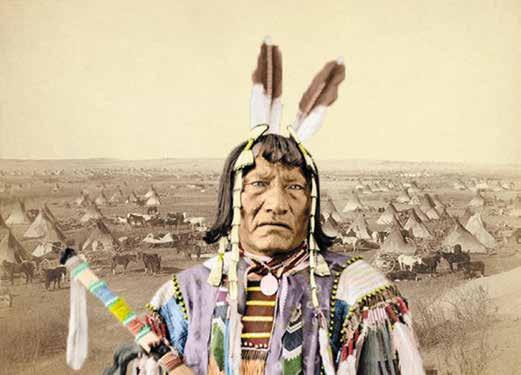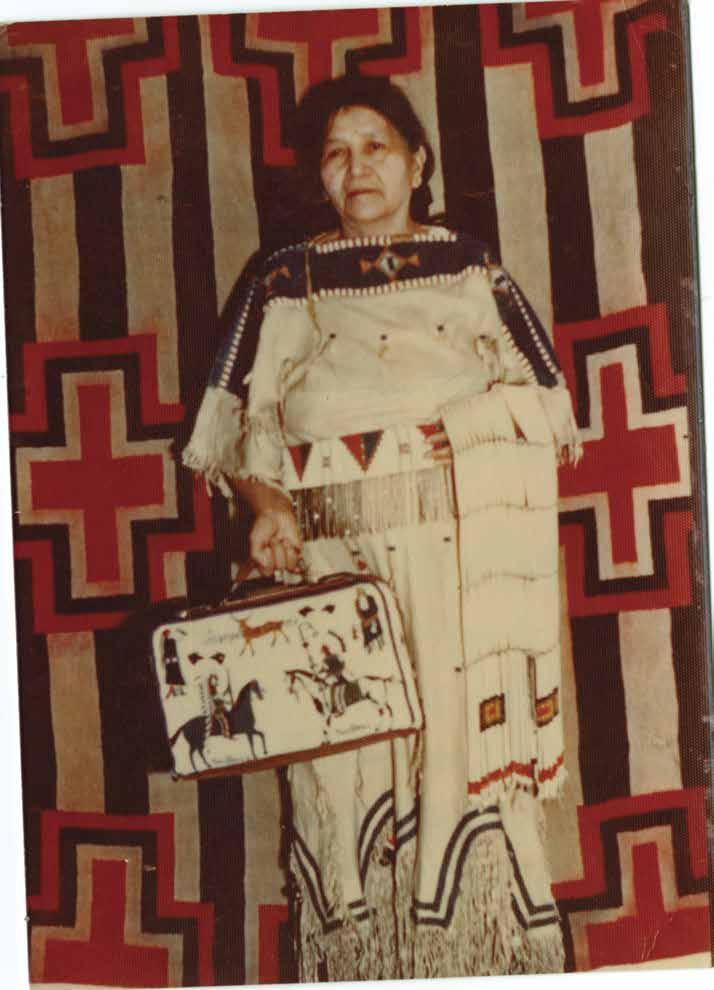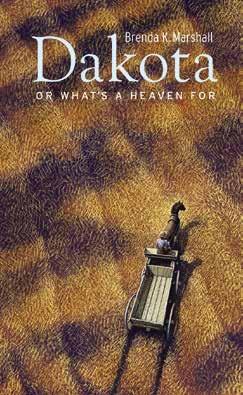
14 minute read
A New Story: A New Vision
By Lucy Annis Ganje

Advertisement
The founding of the University of North Dakota in 1883 coincided with an era of great struggles for Native peoples of the Dakota Territories. In light of historical factors, Native American and non-Native American authors explore the development of the University’s Native North American art collections as well as current attempts to reconsider such works in relation to contemporary Native interests and concerns.
The book examines how a university’s collection of Native North American Art is understood and appreciated within its campus setting. Because art collections are best understood within the context of historical trends of collecting, the book’s authors consider significant changes that have affected the philosophy behind how and why collections of Native American art should be cared for, researched, and displayed. Objects made by Native North Americans, which are re-contextualized within an academic environment, are examined in ways that allow concepts embodied within them to reinforce a sense of greater cultural understanding.
Lavishly illustrated with historical as well as contemporary Native artworks, the book’s design and layout are culturally driven. An ordered grid is used to construct the visual form and to interject a sense of harmony and balance into the layout—using a numerical scheme based on sacred geometry that has special significance within many Native cultures. Special efforts were taken to respectfully document sacred ceremonial objects in an attempt to be responsive to their content, form, and function.
Excerpted from Storytelling Time: Native North American Art from the Collections at the University of North Dakota by Arthur F. Jones and Lucy Annis Ganje, published in 2010 by Hudson Hills Press. Copyright © 2010 by Hudson Hills. Reprinted by permission.
Complexity in art lies in meanings. Signifiers in art as in society, are drawn from process and context, as well as content. The process involved in the making of an object, including the experiences of the maker, becomes part of the object itself. Richard West, director of the Smithsonian’s National Museum of the American Indian, said, “From the Native standpoint, it was the process involved in the creation of an object that was far more important in the end than the object itself.” Neither process nor culture is static. Both change as the conditions of history change. Both are products of their time and environment. THE JOURNEY OF THE ART The journey each object took before coming to rest at the University of North Dakota is also part of the story each piece has to tell. The array of images and artists’ tribal affiliations are an indication of the diversity of Native cultures, each representing a worldview in which “art” is integrated with, rather than compartmentalized from, everyday existence. Dr. Beatrice Medicine, in “Lakota Views of ‘Art’ and Artistic Expression,” writes that a Lakota elder in her community (the Standing Rock Nation located in North and South Dakota) defined art as “taku gaxape na ohola pe” (what
Authors Arthur F. Jones is an art historian who currently serves as chair of the University of North Dakota’s Department of Art & Design, as well as director of the University of North Dakota Art Collections. Lucy Annis Ganje is a graphic designer and a professor in the Department of Art & Design, as well as co-chair of the Campus Committee for Human Rights at the University of North Dakota. Nelda Schrupp, an enrolled member of the Pheasant Rump Nakota First Nation is a nationally known Native American artist whose works are found in numerous public and private collections. Contributors Leigh Jeanotte, an enrolled member of the Turtle Mountain Band of Chippewa, serves as director of the University of North Dakota’s American Indian Student Services, and the American Indian Center.
is made and cherished). However, defining “art” within traditional and contemporary American Indian artistic expression, has been an ongoing source of debate.
Nationally, as academic institutional structures changed, whether through white conscience or Indigenous people’s demands, assumptions about what constituted Native American art changed as well. Art historians, anthropologists, collectors, curators, catalogers, and other keepers of cultural property began to consider American Indian perspectives regarding the creation, acquisition, and display of Native American art objects.
The distinctions between “art” and “artifact,” and “art” and “craft,” began to be discussed as Native American scholars— artists, anthropologists, archeologists, and art historians—became dissatisfied with how their peoples and cultures were being portrayed, and began to create and interpret through a Native lens. It has been argued that the term “artifact” establishes the context of a piece within a Western conceptual framework—an inappropriate portrayal within a Native American paradigm.
What is “art” and what is “artifact” becomes blurred in this publication. The pieces documented here can be described as historical, traditional, contemporary, and innovative. Some pieces serve as family histories, their designs relating to tribal affiliations, family connections, and creation stories. The viewer is encouraged to examine each piece for its aesthetic properties as well as any function it might serve.
Storytelling Time includes objects acquired directly from the artists and pieces originally bought by collectors and subsequently donated to, or purchased by, the University of North Dakota or the UND Foundation. Others were received as gifts, often given by Native American students or their families to thank departments as a whole, or individuals who represented the department, for help received during the students’ time at the university. The provenance (source and ownership history) of some objects remains unknown.
The oldest and by far the largest collection of Native American art at the University of North Dakota is housed in the Elwyn B. Robinson Department of Special Collections at the Chester Fritz Library. The Victor A. Corbett Collection of Plains Indian Art includes clothing, headdresses, and ceremonial objects, many of which incorporate exquisite bead and quill work. Dr. Corbett was a former UND student, dentist, and rancher who acquired the pieces between 1940 and 1955 through purchase and in exchange for dental services. Most of them
were made on the Fort Berthold Reservation, home to the MHA (Mandan, Hidatsa and Arikara/Sahnish) Nation.
Another highlight of this book is the “White Bull Manuscript,” considered to be the most valuable original manuscript held by the Chester Fritz Library and acknowledged as one of the University of North Dakota’s greatest treasures. Joseph White Bull, a nephew of Sitting Bull, was a warrior at the 1876 Battle of the Little Big Horn. Fifty-five years later, in 1931, future North Dakota Congressman Usher Burdick commissioned the then 81-year-old White Bull to record his memories of the battle in words and pictures.
White Bull’s manuscript consists of a black, bound, business ledger book containing 51 pages of Lakota text and pictographs in ink, lead pencil, and colored crayon. This manuscript is an invaluable documentation of the Plains Indian people’s battle against the invasion of their homeland, a manuscript created from a Native perspective. White Bull documented the Battle of the Little Big Horn (known as the Battle of Greasy Grass by the Lakota/Dakota people) and illustrated skirmishes between settlers and soldiers along the Bozeman Trail, along with other important events in Plains Indian history.
White Bull’s manuscript, as part of a genre of American Indian art that came to be known as “ledger art,” toured the U.S. and Canada from 1996 to 1998 as part of the exhibition Plains Indian Drawings, 1865–1935: Pages from a Visual History. The exhibition, organized by the American Federation of Arts, was accompanied by an exhibition catalogue in which art historian Janet Berlo noted the dual character of this type of ledger book:
Works of art are, of course, historical documents, but as all historians know, they are not merely historical documents. The artist inscribes his or her intentions but also, at times, a residue that transcends those intentions. In the case of ledger drawings, what is revealed is an unsettling portrait of one historical era, and a complex socio-cultural portrait of individuals within that era.
For his manuscript, White Bull was paid with a check for $50, dated August 26, 1931. The check was never cashed. THE JOURNEY OF THE PEOPLE The large-scale collection and display of Native North American art and “artifacts” was in full swing around the time that the University of North Dakota was founded in 1883, and corresponded with significant events in U.S. governmental policy toward Indian people. Many private and public collections of American Indian objects resulted from this “high period of colonialism,” lasting from about 1830 to 1930. Art historians Janet Berlo and Ruth Philips note that this period parallels official government policies of removal and assimilation.
In the book, University of the Northern Plains: A History of the University of North Dakota, 1883–1958, author Louis Geiger notes, “The Indian problem was still immediate when the university was established....”
The U.S. government was moving quickly to solve this “problem.” The 1830 American Indian Removal Act authorized the removal of all Indian people from their homelands in the eastern United States, pushing them westward. This policy was strongly supported by white farmers eager to take land occupied by the “Five Civilized Tribes” in the South. The 1851 and 1868 Fort Laramie Treaties further seized control of American Indian homelands on the Great Plains and established the “Great Sioux Reservation.” The following excerpt from a statement by Walter Burleigh, Dakota Territory delegate to the U.S. House of Representatives, directed to Congress in June,1866, is an example of U.S. government policy at the time:
...and the Indian must either willingly or reluctantly surrender his claim to the soil, and abandon his birth right to the hardy pioneers of civilization. While the miserable Indian with his inferior surroundings, has deserted his former hunting grounds and is fast passing away before the steady advance of the white man, for whose inheritance this country seems to have been especially created.
The visual imagery formally chosen to represent the state and the University also signals the region’s attitudes toward Native American people and life-ways.
Assembly of the Territory of Dakota, describes one of its symbols as “an Indian on horseback pursuing a buffalo toward the setting sun.” A plow and anvil are in the foreground, suggesting symbolically the disappearance of Indian people and their way of life. The North Dakota state website, however, states, “Research has failed to reveal the reasons the selected symbols were chosen.” This seal was adopted as “The Great Seal of North Dakota” when the territory became a state in 1889.
The General Allotment Act (Dawes Act) of 1887 forced individual land ownership onto a people who had operated for millennia as a collective, and mandated farming and ranching as a means of existence. The Homestead Acts opened Indian land to white settlement and secured the most fertile areas of the reservations for white ownership.
These and other government policies promoting cultural extinction saw American Indian people segregated from white culture, confined to reservations, with their spiritual practices and languages outlawed. Native cultures and people were then described by the majority white culture as “disappearing.” These deliberate actions and policies prompted the “vanishing Red Man theory.” The belief that Native culture would soon cease to exist encouraged the collection of items related or “belonging” to Native people. Objects were collected not as art, not even as artifact, but as specimen, put under glass in curio cabinets or tucked away in boxes and forgotten. American Indian art as a category did not exist until the 1930s, according to Dan Monroe, the director of Massachusetts’ Peabody Essex Museum.
The newly formed universities were urged to begin collecting Indian objects as a means to educate the public on a disappearing species. Among the white population, the general consensus suggested that Indian people could not be trusted (or were unable) to care for their own histories and cultures. Therefore, it fell to white people and institutions to rescue and maintain these objects.
This was also a time of extreme governmental intervention and constraints upon the lives of Native American people. Young people were forced into boarding schools, where their hair was cut and speaking their language forbidden. Tribally owned land was seized by the government, broken up into sections and opened to white settlement. The U.S. government’s policy of cultural genocide attempted to strip American Indian individuals and communities of their values in order to “kill the Indian, and save the man,” as the founder of the Carlisle Indian School proclaimed in 1892.
SELLING AND COLLECTING CULTURE Economic hardship forced many Native people to sell cherished family heirlooms. Their Native owners did not consider many of these objects as art, but as symbols of status, identity, or ceremony. Often pieces were a connection to past and future. Handed down from one generation to the next, these objects held the stories that kept body and soul together.
An unsigned and undated note addressed to Dr. Corbett, a copy of which accompanies this essay, is one example of how and why treasured pieces might end up in private or public collections. The writer asks Dr. Corbett to consider a loan of $6.50, offering a grandmother’s beaded dress as collateral:
I’d like to borrow $6.50 on this Indian dress or if you can’t do that I’ll sell it to you for that much. I hate to do this but I need the money real bad and I heard you were interested in Indian things. This dress was made by this girls 80 year old grandmother so it was a keepsake.
This torn, creased, and stained piece of paper might not provide provenance, but it alters how we view the object. The selling of a “keepsake,” something handmade and cherished, for $6.50, even taking into account the economic context of that time, reveals the socio-economic environment in which many Indian people found themselves. Native families were often forced to sell what was most precious—a connection to family, culture and identity. These items were statements about themselves and their history, and contained many levels of information.
Many items portrayed in this book have special sacred or ceremonial significance and are considered to have spirits. Numerous objects were not created to
be exhibited or displayed, but to be used, thereby bringing strength to the entire community. Images of eagle staffs, for example, part of the American Indian Student Services Collection, appear together with a photograph of the staffs being carried by American Indian veterans in 2007 at the grand entry during the University of North Dakota Indian Association’s annual wacipi (powwow). This juxtaposition helps to place the articles in context.
Native methodologies were incorporated in the documentation and handling of objects considered to be sacred. Native people understood that sacred pipes (pipes that have been used in ceremony) are not to be displayed in one piece. The photograph of a pipe, part of the Emily Doak Wolff Collection, is shown with bowl and pipe apart, a practice showing honor and respect for the pipe and the people.
RESPONSIBILITIES AND RESPECT Each piece in this book was made and acquired within the context of a particular cultural, social, and economic climate. Adding to the complexity of the University of North Dakota’s relationship with American Indian art and regional tribes is another factor: Since the 1930s UND has “branded” itself using an American Indian tribal name, “Sioux,” and various American Indian male images. This appropriation of tribal identity has caused considerable controversy and is only one example of the many issues at stake regarding tribal self-definition, sovereignty, regional racial history, and current politics.
The care taken in photographing the art objects and designing this book reflects the University of North Dakota’s stated commitment to American Indian people and communities. This commitment includes a responsibility to maintain, care for, and ultimately return American Indian art that has ongoing historical, traditional, and cultural importance to tribal communities. The University is the repository for collections which, through 19th- and early 20th-century eyes, were a means to document and teach future generations about Indian people. Today questions raised about such collections include: Who controls the objects? Who has access to them? What is the nature of the knowledge they provide? Who interprets meaning and for whom? The education these objects provide too often is through only one sense—sight. Too often the stories, knowledge, and history that accompany these “captured objects” are buried. Stored away in boxes or behind glass cases, removed from their communities, they cannot fulfill their role for the people. When a culture does not rely on written texts to record their history—their stored knowledge—objects take on increased significance.These items hold information that connects a people through generations and despite violent interruptions. They carry the historical memory needed to rebuild and restore balance and harmony for all peoples and cultures.
The storing, and restoring, of Native objects is a responsibility undertaken out of respect for the important place that art holds in our communities. Art commemorates, inspires, educates, and heals.











